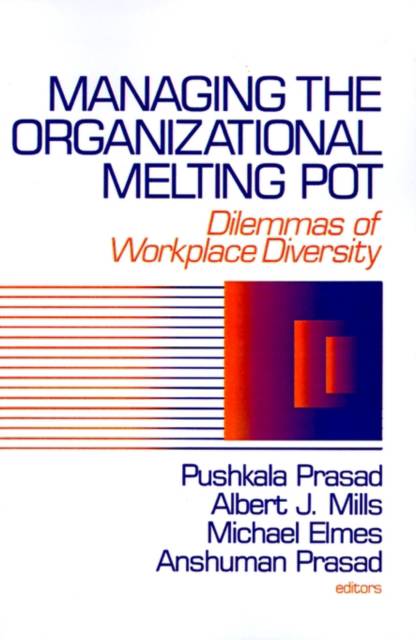
Bedankt voor het vertrouwen het afgelopen jaar! Om jou te bedanken bieden we GRATIS verzending (in België) aan op alles gedurende de hele maand januari.
- Afhalen na 1 uur in een winkel met voorraad
- In januari gratis thuislevering in België
- Ruim aanbod met 7 miljoen producten
Bedankt voor het vertrouwen het afgelopen jaar! Om jou te bedanken bieden we GRATIS verzending (in België) aan op alles gedurende de hele maand januari.
- Afhalen na 1 uur in een winkel met voorraad
- In januari gratis thuislevering in België
- Ruim aanbod met 7 miljoen producten
Zoeken
Managing the Organizational Melting Pot
Dilemmas of Workplase Diversity
Pushkala Prasad, Albert J Mills, Michael Elmes, Anshuman Prasad
Paperback | Engels
€ 238,45
+ 476 punten
Omschrijving
Illuminating the troublesome and disturbing aspects of workplace diversity that tend to be glossed over in most management literature, Managing the Organizational Melting Pot covers key issues such key as: individual and institutional resistance, the effectiveness of diversity change efforts, and the less visible ways in which exclusion and discrimination continue to be practiced in the workplace. To assist the reader in understanding some of these dilemmas, the contributors to this collection adopt an array of theoretical frameworks, that are all striking departures from traditional and more functional perspectives on diversity. The volume also employs a variety of theoretical perspectives, including intergroup relations theory, critical theory, Jungian psychology, feminism, post-colonial theory, cultural history, postmodernism, realism, institutional theory, and class analysis. Further, the authors examine a multitude of organizational situations in which the complications of diversity surface-many of which cross race, gender, ethnic and other socially constructed boundaries. Managing the Organizational Melting Pot draws examples not only from the United States, but also looks at situations from Canada, Britain, and the Middle East. Students, scholars, and managers who want to prepare themselves to deal with the challenges presented by a multicultural workforce will find this beneficial reading. In addition, researchers interested in conducting research in diversity management will find this an up-to-date, thought-provoking resource.
Specificaties
Betrokkenen
- Auteur(s):
- Uitgeverij:
Inhoud
- Aantal bladzijden:
- 403
- Taal:
- Engels
Eigenschappen
- Productcode (EAN):
- 9780803974111
- Verschijningsdatum:
- 1/01/1997
- Uitvoering:
- Paperback
- Formaat:
- Trade paperback (VS)
- Afmetingen:
- 154 mm x 229 mm
- Gewicht:
- 657 g

Alleen bij Standaard Boekhandel
+ 476 punten op je klantenkaart van Standaard Boekhandel
Beoordelingen
We publiceren alleen reviews die voldoen aan de voorwaarden voor reviews. Bekijk onze voorwaarden voor reviews.









